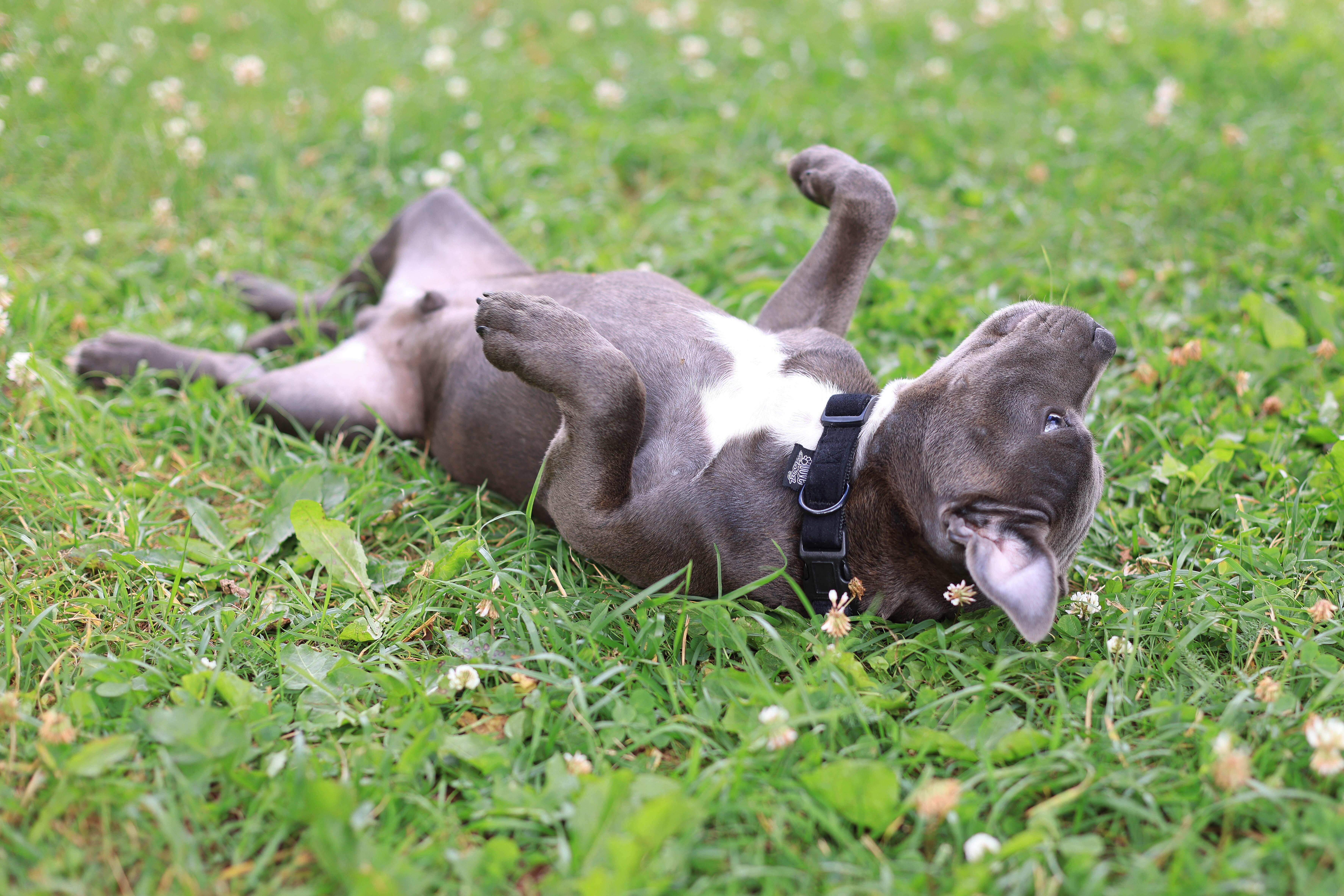Understanding dog body language signs is crucial for pet owners to interpret their pet’s behavior and respond appropriately. Dogs use a combination of facial expressions, body postures, and vocalizations to communicate their emotions and intentions.
Proper interpretation of these signals can help prevent misunderstandings, reduce the likelihood of aggression or fear-based behavior, and strengthen the bond between dogs and their owners. As responsible pet owners, it’s essential to be able to recognize and understand these cues to ensure the well-being of our furry friends.
By being attuned to their body language, we can better communicate with them and provide the care and support they need. We will explore the various signs of dog body language and how to interpret them effectively. Whether you’re a seasoned dog owner or a new pet parent, knowing these signals can enhance your relationship with your beloved canine companion.
1. Differentiating Tail Wagging
1. Differentiating Tail Wagging
Dogs use their tails to communicate a wide range of emotions and signals. Each wag represents a different message, and understanding the subtleties of tail wagging can help you decipher your pup’s feelings. Let’s delve into the various meanings behind high and low tail wagging to better comprehend your furry friend’s emotions.
1.1. Meaning Behind High Tail Wagging
When a dog wags its tail high and briskly, it often indicates excitement and confidence. This wagging is usually accompanied by a relaxed body posture and a wagging rear end. Dogs with high tail wags may be feeling happy, friendly, and eager to engage with you or other dogs. It’s essential to pay attention to the context and accompanying body language to fully grasp the message behind a high tail wag.
1.2. Understanding The Message Of A Low Tail Wag
On the other hand, a low tail wag typically signifies hesitation, submission, or insecurity. When a dog holds its tail low and wags it gently, it may be feeling uncertain, anxious, or even fearful. In some cases, a low tail wag can also signal a more neutral or neutral to negative state of mind. By observing other body language cues and the overall environment, you can interpret the true meaning behind a dog’s low tail wag.

Credit: bookyourpet.com
2. Exploring Ear Positions
Dogs communicate primarily through body language, and one of the key indicators of their state of mind is their ear positions. Understanding what different ear positions signify can help you interpret your dog’s emotions and reactions better. In this section, we’ll explore the various ear positions and their meanings to enhance your ability to communicate effectively with your furry friend.
2.1. The Importance Of Erect Ears
Erect ears signify alertness and attentiveness. When a dog’s ears are upright and facing forward, it indicates that they are focused and attentive to their surroundings. This position can suggest that the dog is curious and ready to engage with people, other animals, or new stimuli. It’s essential to be mindful of this ear position, especially when introducing your dog to new experiences or environments, as it can indicate their level of comfort and readiness to engage.
2.2. Interpreting Folded Or Pinned Back Ears
Folded or pinned back ears can signal a variety of emotions, such as fear, submission, or anxiety. When a dog’s ears are pressed flat against their head, it may indicate that they are feeling threatened or submissive. This position is often observed in situations where the dog is feeling nervous, uncomfortable, or attempting to appease a more dominant individual or animal. Recognizing this ear position is crucial in identifying when your dog may be experiencing stress or discomfort, allowing you to intervene and create a more secure and reassuring environment for them.
3. Analyzing Facial Expressions
Dogs communicate through various signals, and one of the most telling ways is through their facial expressions. Analyzing a dog’s facial expressions can provide valuable insights into their emotions and intentions. By paying attention to their mouths and eyes, you can better understand what your furry friend is trying to convey. Let’s take a closer look at the key aspects of interpreting dog facial expressions:
3.1. Deciphering A Relaxed And Open Mouth
A dog with a relaxed and open mouth is displaying signs of contentment and ease. When their mouth is slightly open, with their tongue lolling out and no tension in their lips, it indicates a comfortable and friendly demeanor. This is often observed when a dog is at ease, enjoying playtime, or expressing calmness.
In contrast, a dog with a tightly clenched jaw or lips that are pulled back may be feeling anxious, stressed, or even aggressive. It’s essential to pay attention to these subtle signs to gauge your dog’s emotional state and respond appropriately.
3.2. Recognizing Signs Of Fear In The Eyes
The eyes are a window to a dog’s soul, and they can reveal a lot about their emotional state. When a dog is afraid or anxious, their eyes may appear wide, with dilated pupils. They may also avert their gaze or avoid eye contact altogether. These behaviors demonstrate their discomfort and unease.
Additionally, look out for a hardened or fixed stare, which can indicate a dog’s aggressive tendencies. If you notice your dog’s eyes are flickering rapidly or they are repeatedly blinking, it suggests they may be trying to defuse a tense situation. Understanding these emotional cues can help you respond in a way that makes your dog feel safe and secure.
4. Reading Posture And Body Movement
When it comes to communicating, dogs rely heavily on their body language. Understanding the various signals they use can help us better interpret their emotions and intentions. In this section, we will focus on reading a dog’s posture and body movement, which can reveal valuable insights about their state of mind. Paying attention to these cues allows us to create a stronger bond and ensure our furry friends feel safe and comfortable in their environment.
4.1. Understanding A Stiff And Upright Stance
A dog with a stiff and upright stance may be indicating signs of aggression or tension. When a dog stands tall, with their head held high, it typically means they are alert and on guard. Their muscles may appear tense, and their tail might be held rigidly. This posture serves as a warning that they are ready to defend themselves if necessary.
Some common indications of a stiff and upright stance include:
- Barking or growling with a raised tail
- Showing teeth or snarling
- Raised hackles along the back
When encountering a dog in this posture, it’s important to give them space and avoid any sudden movements. Approaching an anxious or aggressive dog can escalate the situation and potentially lead to a defensive response.
4.2. Interpreting Submissive Signals Through Crouching
Dogs use crouching as a way to communicate their submission or fear. A submissive dog will exhibit a lowered body posture, with their head held low and their tail tucked between their hind legs. By crouching, they are indicating that they pose no threat and are willing to submit to a more dominant individual.
Signs of a submissive crouching posture include:
- Avoiding direct eye contact
- Licking lips or yawning
- Tail tucked tightly between the hind legs
It’s essential to approach a dog in a calm and gentle manner when they are displaying signals of submission. Forcing interaction or displaying dominance can cause the dog to feel more anxious or frightened.
Understanding a dog’s posture and body movement is crucial for effectively interpreting their emotions and intentions. By recognizing whether a dog is displaying a stiff and upright stance or crouching in submission, we can adapt our behavior to create a positive and safe environment. Being mindful of these body language signs allows us to communicate with our furry friends more effectively and build a stronger bond based on trust and understanding.
5. Decoding Vocalizations

Credit: www.akc.org

Credit: www.akc.org
Frequently Asked Questions For Understanding Dog Body Language Signs
How Do You Read A Dogs Body Language?
To read a dog’s body language, observe their tail position, ear position, and overall posture. A relaxed tail and ears, along with a loose body, indicate a calm and friendly dog. Raised hackles and ears pulled back signify fear or aggression.
Pay attention to their eye contact and facial expression too.
How Do You Understand What Your Dog Is Trying To Tell You?
Understanding your dog involves observing body language, vocalizations, and behavior. Pay attention to tail wagging, ear position, and facial expressions. Spend quality time with your dog to build a strong bond, and communicate through positive reinforcement. Learning your dog’s cues will deepen your bond and improve communication.
What Is A Calming Body Language For Dogs?
To calm a dog, use relaxed body posture, slow movements, and gentle voice tones. Avoid direct eye contact. Offer a safe space and positive reassurance.
What Are The Body Language Signals Of Dogs?
Dogs use body language signals to communicate. Examples include tail wagging, raised hackles, and ear position. They also use eye contact, facial expressions, and body posture to convey their feelings and intentions. Paying attention to these signals can help us understand and respond appropriately to our canine companions.
Conclusion
Understanding dog body language signs is crucial for every dog owner. Being able to read your dog’s body language can help you better communicate with them and enhance your bond. By recognizing signs of aggression, fear, or happiness, you can create a safe and positive environment for your furry friend.
Remember, dogs rely heavily on nonverbal cues, so paying attention to their body language is essential. With practice and knowledge, you can become adept at understanding your dog’s needs and emotions. So, start observing your dog’s body language today and strengthen your relationship with them.

